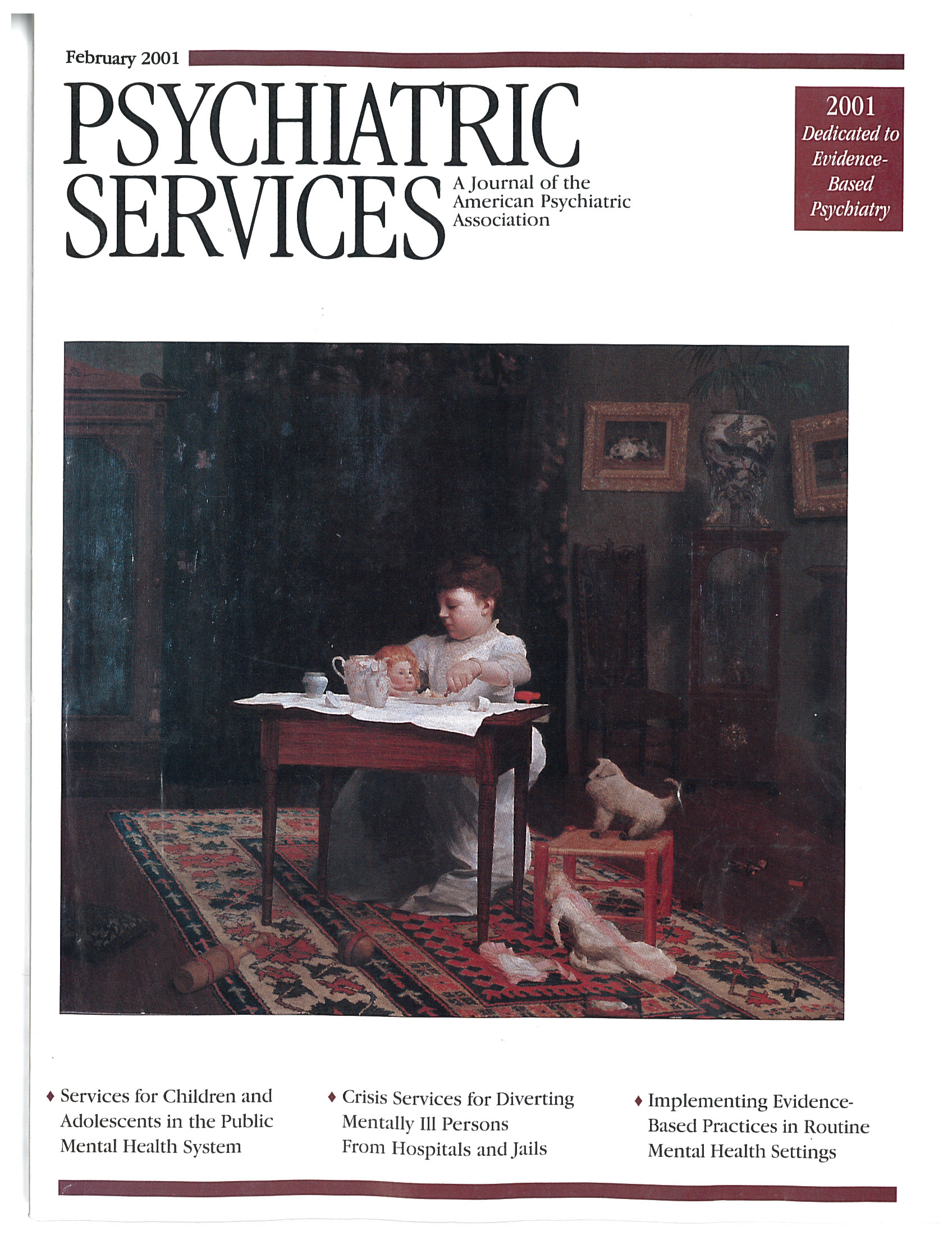Violence in the Community as a Predictor of Violence in the Hospital
Predicting violence by persons who have a history of mental illness in the community is complicated by the fact that mentally ill persons are a heterogeneous group, with varying diagnoses and histories of co-occurring substance abuse problems (1). Clinicians generally believe that a history of violence may be a key predictor of future violence (2,3), and they expect that patients who have a history of violence will be violent after admission to a hospital.
At Rockland Psychiatric Center, we studied the relationship between a history of violence in the community and violence in the hospital. On average, the facility admits 59 patients a month for intermediate care from the counties of Westchester, Rockland, and New York. Patients stay 60 to 90 days. All patients are initially treated in community hospitals for three weeks and are admitted to Rockland Psychiatric Center for further treatment of their unstable psychiatric disorders.
The study involved a retrospective analysis of data from 59 patients consecutively admitted over a one-month period (March 15 to April 15, 1999). Information about each patient's history of violence in the community before admission to the community hospital was collected from all available medical records. Data on violent episodes in the community within the past ten years that resulted in an arrest were obtained from the criminal justice system.
Information about episodes of hospital violence for these patients was collected from nursing reports over six months or until discharge. Violent episodes at the community hospital before transfer were counted as data for hospital violence. Acts of violence were pushing, grabbing, shoving, slapping, throwing objects, kicking, biting, choking, hitting, beating up, and making threats with or using a weapon.
The cohort included 44 men and 15 women. The predominant diagnosis was schizophrenia (49 patients, or 83 percent), followed by bipolar disorder (10 patients, or 17 percent). Although only a fourth of the patients were women, they accounted for half of the patients who were violent in the hospital. White women with no previous history of violence had the highest incidence of violence in the hospital.
Twenty-two of the 44 male patients (50 percent) had a history of violence, as did nine of the 15 females (60 percent). Sixteen patients (eight male and eight female) had one or more episodes of violence in the hospital, and five of the 16 had a history of violence. Among the 43 patients who were not violent in the hospital, 26 had a history of violence. Chi square analysis and Fischer's exact test did not show a significant association between a history of violence and violence in the hospital.
This study suggests that a history of violence may not predict violence in the hospital and that violence in the hospital may be specific to the environment and related to the hospitalization experience itself. The study involved a small number of patients and information about previous violence may not have been complete. Also, we did not examine factors such as staff members' attitudes toward patients with a history of violence or the influence of substance abuse or the hospital milieu. A larger study considering these factors is indicated.
Dr. Dinakar is clinical director and Dr. Sobel is chief of psychiatry at Rockland Psychiatric Center in Orangeburg, New York. Both are also clinical assistant professors of psychiatry at New York University School of Medicine in New York City.
1. Steadman HJ, Mulvey EP, Monahan J, et al: Violence by people discharged from acute psychiatric inpatient facilities and by others in the same neighborhoods. Archives of General Psychiatry 55:393-401, 1998Crossref, Medline, Google Scholar
2. Lidz C, Mulvey EP, Gardner W: The accuracy of predictions of violence to others. JAMA 269:1007-1011, 1993Crossref, Medline, Google Scholar
3. Tardiff K, Marzuk PM, Leon AC, et al: A prospective study of violence by psychiatric patients after hospital discharge. Psychiatric Services 48:678-681, 1997Link, Google Scholar



